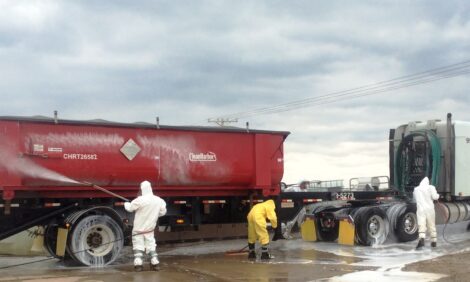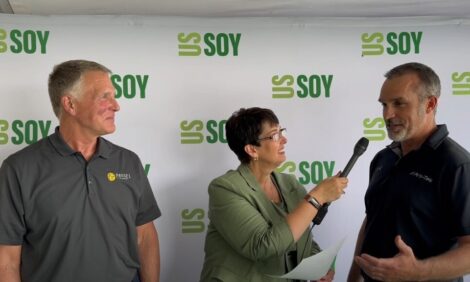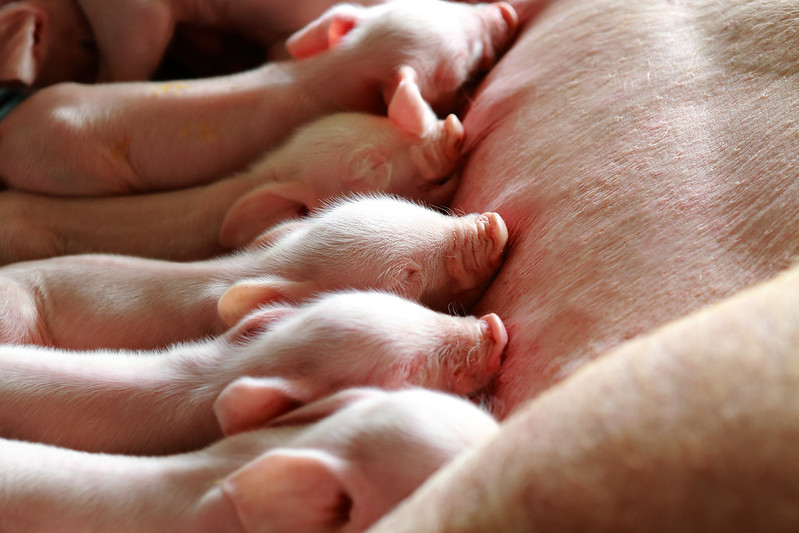



Conception to first 6 weeks of life impacts lifetime performance
Dr. Ruben Decaluwe, Global Technical Manager of Swine Young Animal Feed at Trouw Nutrition, puts an economic value to weight gain early in the piglet's life.Part of Series:
< Previous Article in Series
LifeStart is defined by Trouw Nutrition as the period between conception and 70 days of age. LifeStart will influence and promote performance of your piglets during later phases of life.
What potential can be reached?
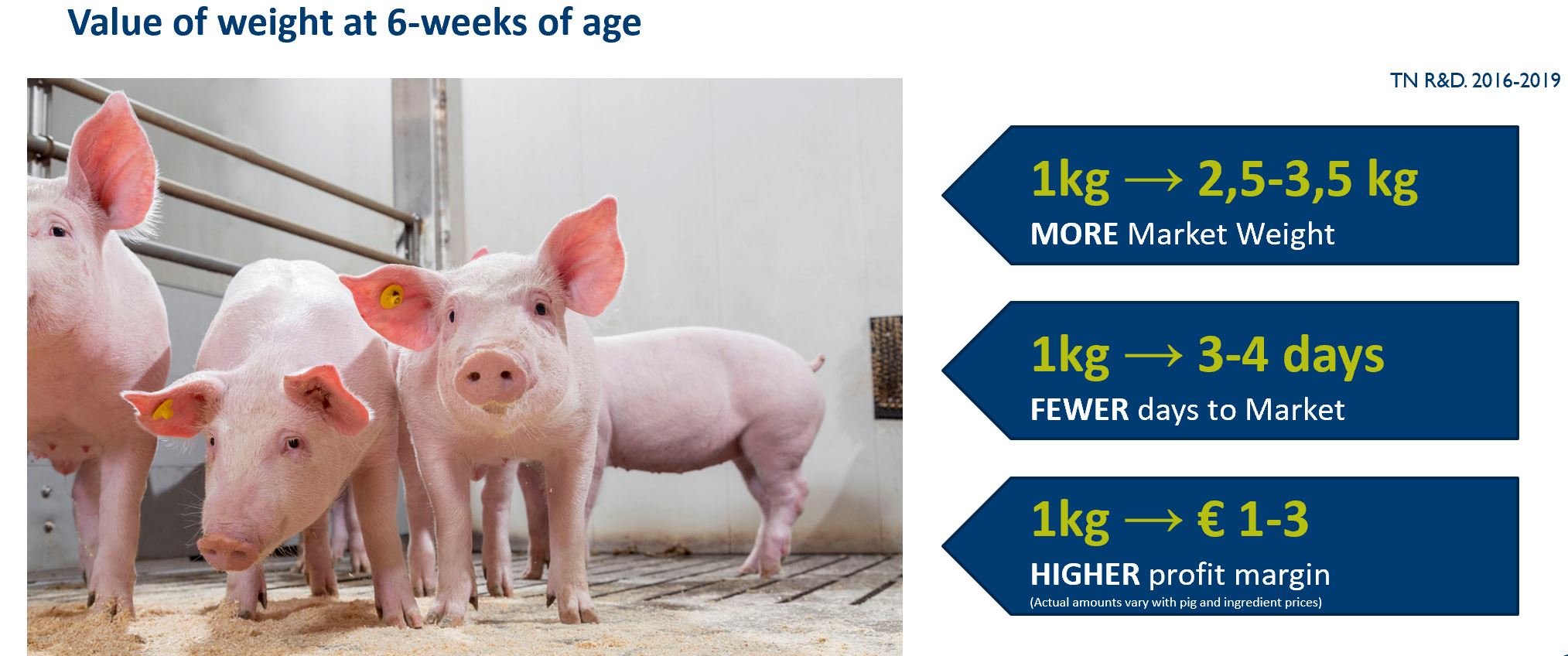
“Based on numerous data sets and trials, we have learned that if we plot the value of weight at six weeks of age, one extra kilogram at six weeks of age can lead to 2.5 to 3.5 kilograms more market weights, or three to four days fewer to market,” said Dr. Ruben Decaluwe, Global Technical Manager of Swine Young Animal Feed at Trouw Nutrition. “Putting an economic value to it, it's equal to about €1 to €3 per extra kilogram you gain at six weeks of age.”
The economic value is highly dependent on the pig and ingredient prices at that time in a specific region, but it’s clear that investing in early life and optimizing your piglets’ quality at six weeks of age creates potential not only in pig performance but in farmer profitability.
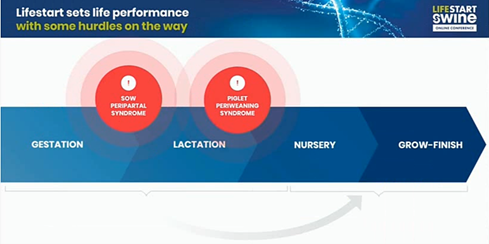
Six weeks of life is a crucial point in a pig's life, but much can happen from conception to this age. There are two critical transition periods during early life – the peripartal transition around farrowing and the transition around weaning.
“During these transitions, many challenges come together and become visible and tangible, and we need to find solutions so pig producers can maximize piglet quality at six weeks of life and optimize lifetime performance,” said Decaluwe. “In our development of solutions, we are always reminded they need to lead to profitable pig production, be user friendly and fit within the context of production operations. The world is changing continuously, and other contexts are occurring like sustainability targets, antimicrobial reduction, trade controls, etc., and we need to ensure our solutions fit within these contexts and allow profitable production within this new world we're living in.”
Peripartal transition
One of the main parameters used to estimate piglet quality is birth weight. This is key because research shows that 100 grams of extra birth weight can lead to 200 grams of extra weaning weight. Thus, every gram of extra birth weight gained offers a greater chance of higher total lifetime production.
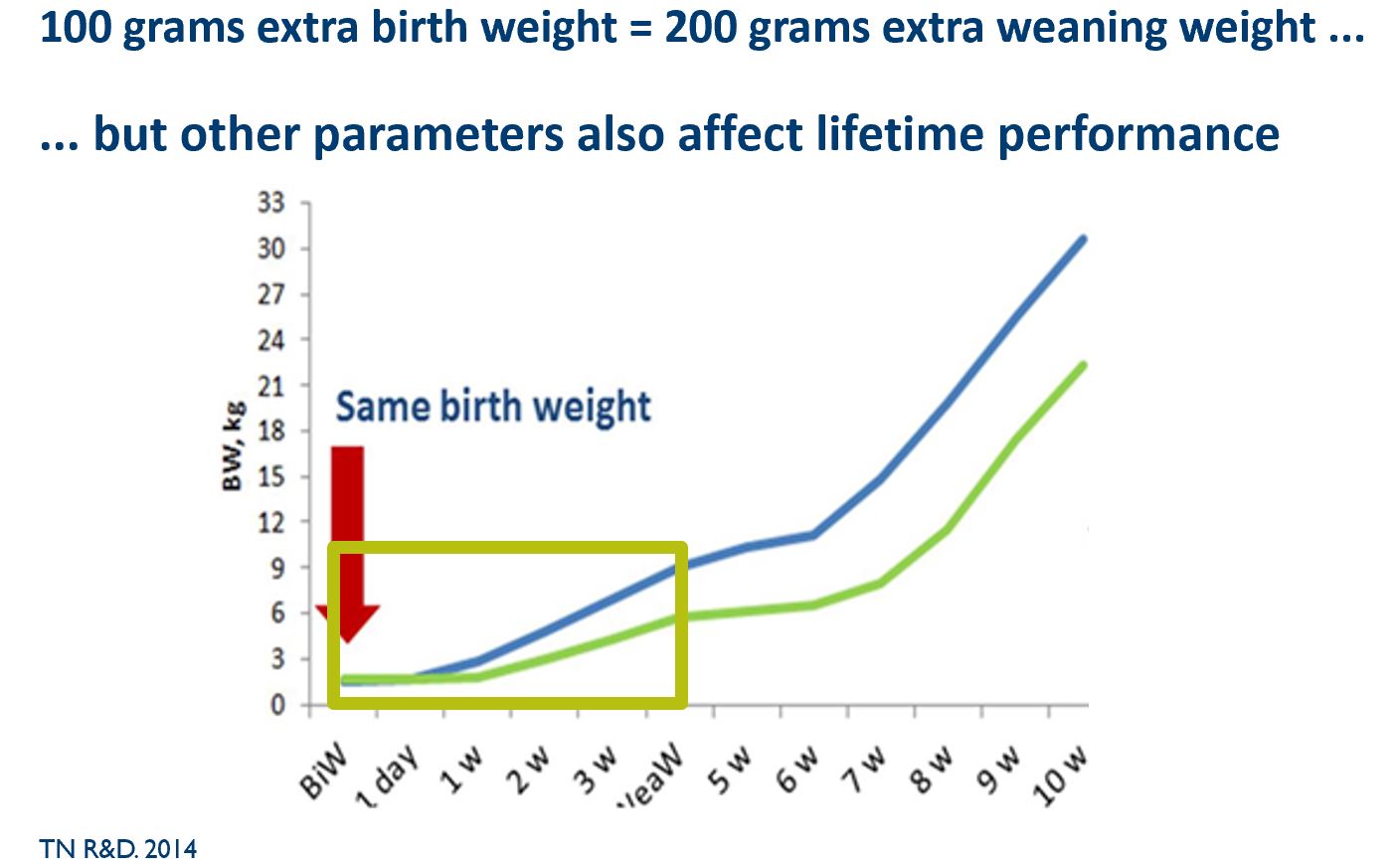
“On the chart (above), piglets are all starting at the same birth weights and we can see their growth curves. There can be quite a bit of variation between the optimal and suboptimal. Looking at the period during the lactation (box), there's already deviation occurring. It’s important to understand why this is happening, so we use roadmaps that can help identify the critical parameters and/or main challenges observed at farrowing.”
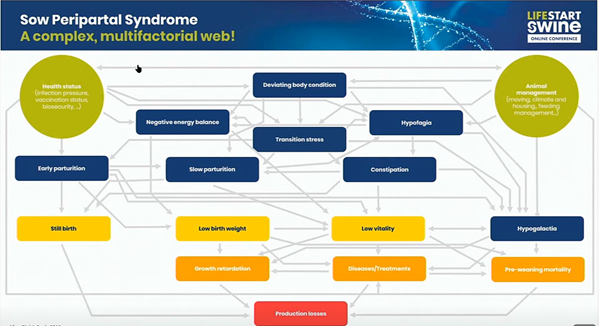
Health status of the farm is important, and management surrounding farrowing is critical. Looking at sow management, many things can be sub-optimal like deviating body condition, constipation, slow parturition, early parturition and hypogalactia. For the piglet, there may be low vitality, low birth weight and/or high stillbirths. When plotting all the links between these challenges, it’s easy to see that everything is linked to each other. For example, problems with hypogalactia may be induced by multiple pathways. To solve the issue, it’s important to identify the true underlying cause in each specific situation.
“The commonality is that each of these pathways lead to lost production, but the roadmap can help us plot our solutions,” he explained. “For example, if we start with a farm that's struggling with farrowing and facing production losses. We start looking at some of the key challenges, but there's not one clear indicator of the problem. The farm is facing stillbirths, birth weight problems, low vitality, milk producing problems, and the sows don't eat well while other sows are facing constipation and parturition problems. It’s all happening at the same time, but often this can be narrowed down to originating with deviating sow body conditions.”
Weaning transition
As noted earlier, the second critical transition period during early life is the transition that occurs around weaning. Birth and weaning weights of piglets are a good predictor of the future performance. By plotting pig weaning weights, data shows that for every 100 grams of extra weaning weight, producers will get about 175 grams extra weight at 10 weeks of age. However, other parameters can also impact growth curves for pigs. The Trouw team has found that the main difference in growth occurs during the first two weeks post-weaning, but what is causing the range in growth patterns?
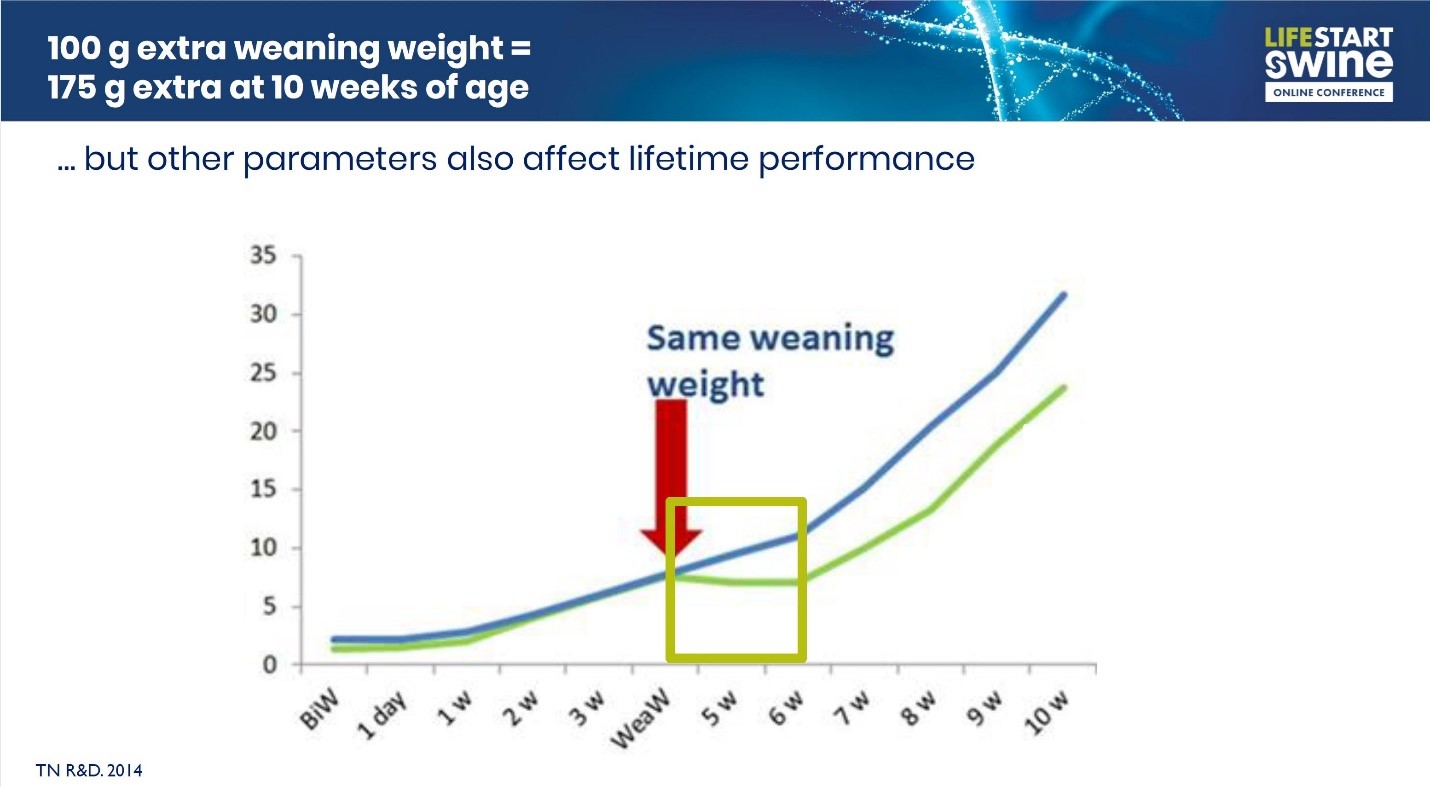
Using a roadmap called the piglet period weaning syndrome, it’s easy to see the potential challenges a piglet faces and how they are all linked together. The real challenge is determining the underlying cause to solve the problem.
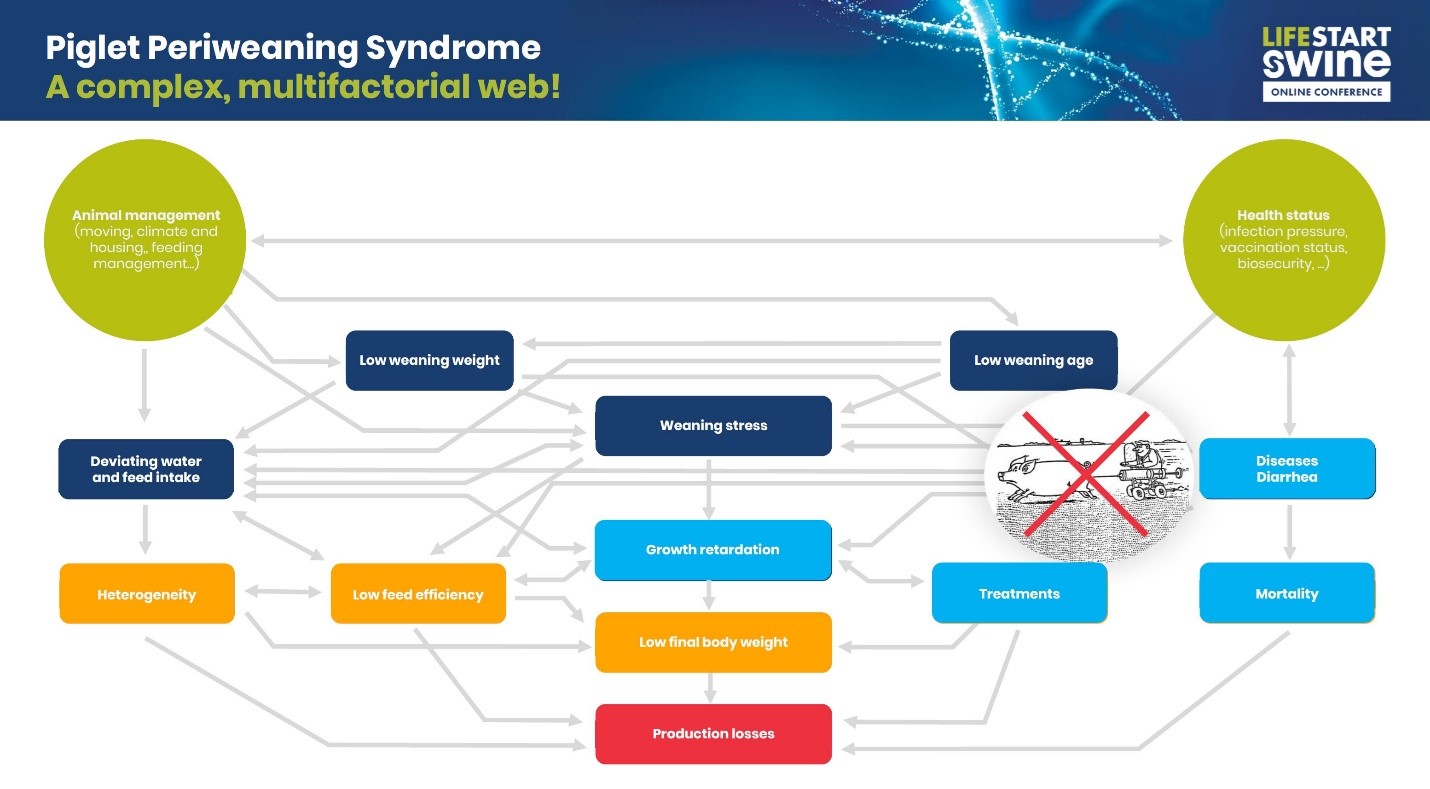
For example, production losses caused by growth retardation, treatments and mortality can be linked back to problems with disease and diarrhea.
“Now in Europe and soon moving everywhere in the world, the risk for disease development will become a bigger problem as antibiotics in feed are reduced,” he said. “The context is changing so we also need to adapt our solutions and our way of thinking and working. As a result, Trouw Nutrition has developed some nutritional innovations to support gut health.”
A meta-analysis of three trials was conducted in three countries using more than 5,000 pigs from farms who were facing gut health challenges. The trial farms were losing performance and experiencing real clinical challenges due to a variety of pathogens. The study utilized:
- Positive control - typical commercial diet using medicated levels of ZnO or antibiotics
- Negative control - same diet without medicated levels of ZnO or antibiotics
- Milkiwean group – commercial diet with a combination of nutritional technologies that Trouw developed
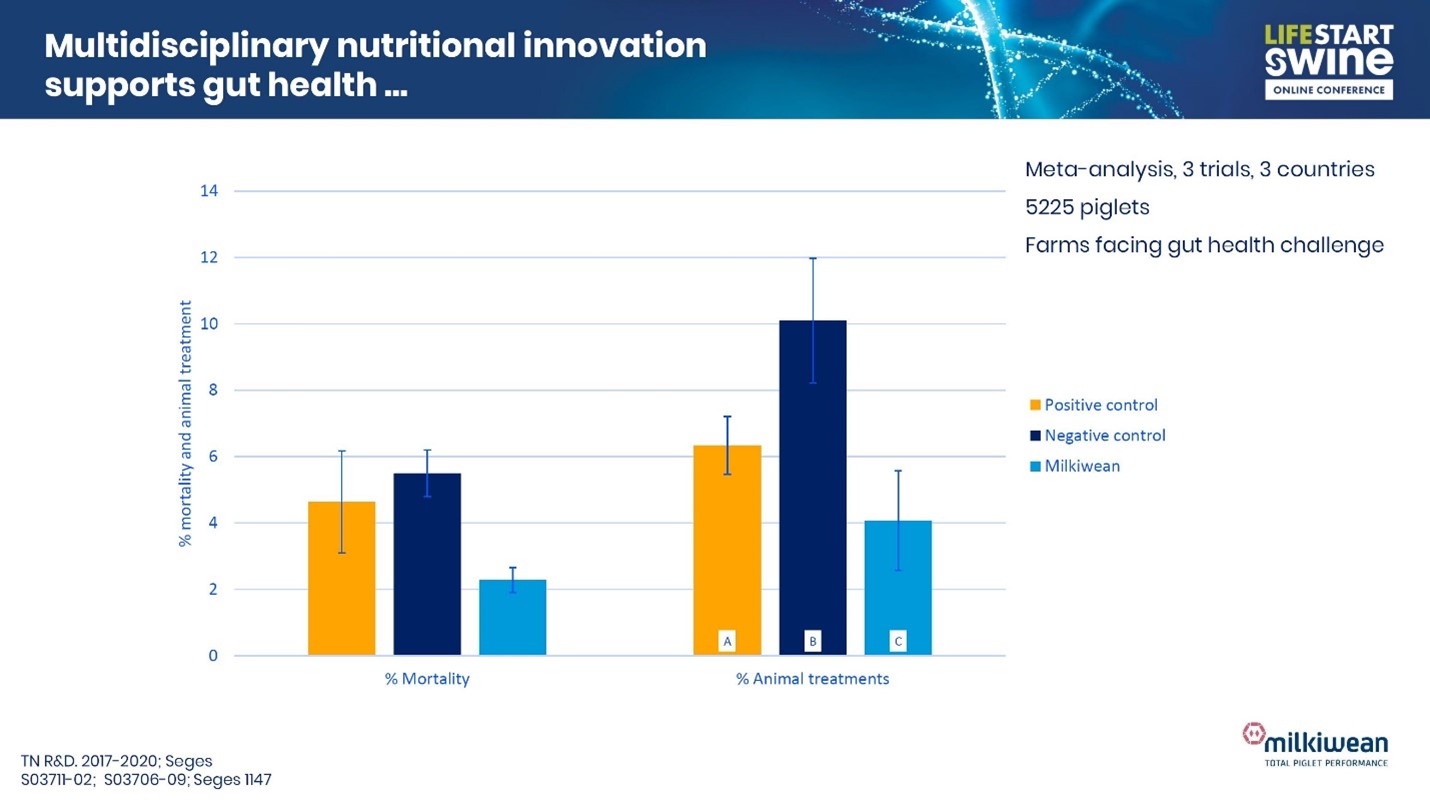
“Looking at the difference between the positive and the negative control groups, there was no statistical difference, only a minor numerical difference in mortality,” he explained. “But the overall high mortality rate already indicates the significant disease challenge on the farms. Using medicated feed resulted in a significant reduction in animal treatments. This shows the in-feed medication was effective in reducing the disease challenge, leading to less individual treatments of your piglets. Just leaving the antibiotics or the medicated levels of ZnO out in this situation doesn't seem to offer a solution.”
The Milkiwean group showed numerically and statistically the lowest percentage of mortality and animal treatments on-farm, but more importantly, did it without compromising performance and profitability.
In the same three trials with the positive control set at 100%, and the negative control shown plotted in the blue bars, we can see what happens if you remove the antibiotic use.
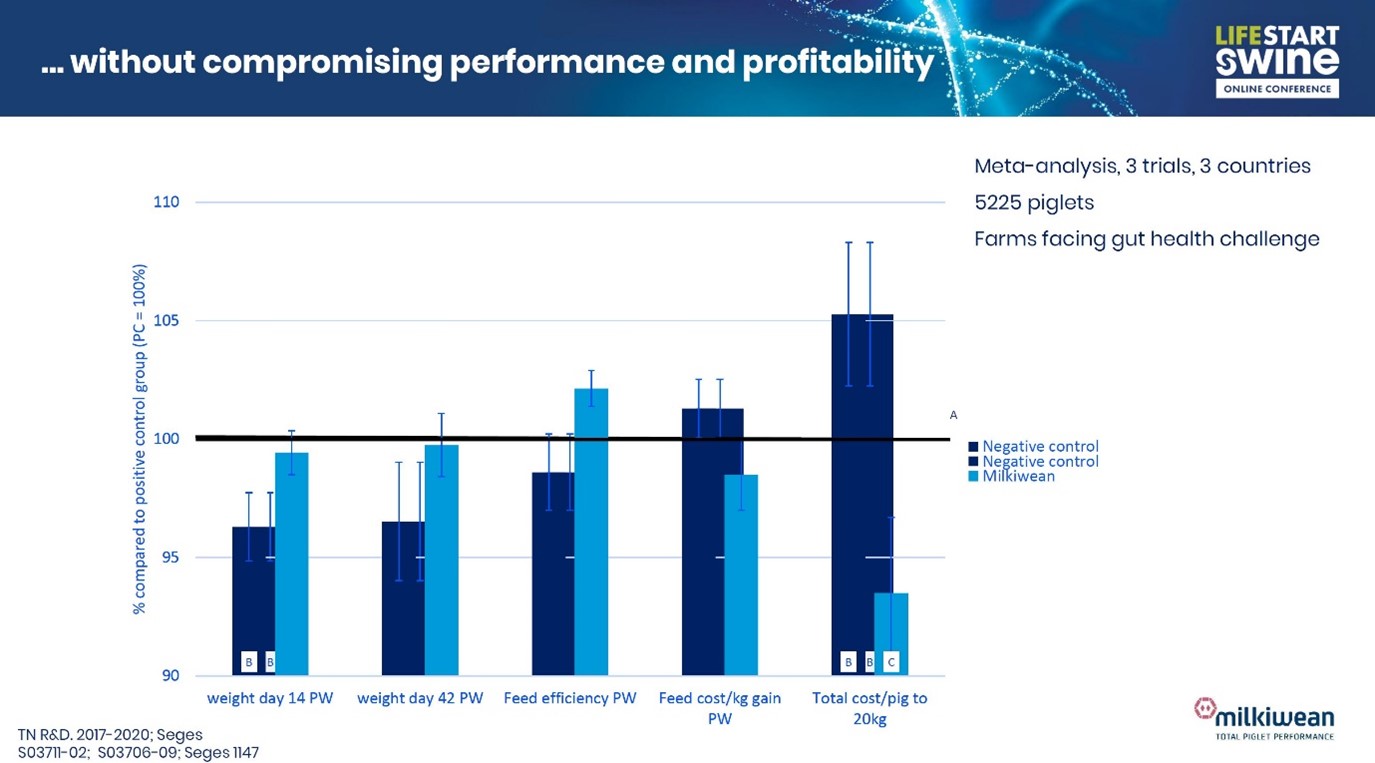
“If you take out the medicated levels of ZnO or the antibiotics, performance drops in the nursery phase and creates a higher risk of low performance in your growth during finishing,” he noted. “Feed cost per kilogram gain is higher, but also total cost - feed cost plus mortality and treatment cost - are going up significantly.”
On the other hand, the Milkiwean group showed a similar to improved performance and profitability compared to the positive control group.
Thus, removing medication out of the feed in health-challenged farms will be very costly to producers. However, use of Trouw’s nutritional innovations can sustain gut health while maintaining performance levels and profitability.
Role of functional feed additives
Functional additives play multiple roles in pig health - from preventing bacterial intake to strengthening gut barrier function to stabilizing microbiota and even immunomodulation. Each requires specific feed additives, so it’s important to combine your feed additive package within your piglet programs.
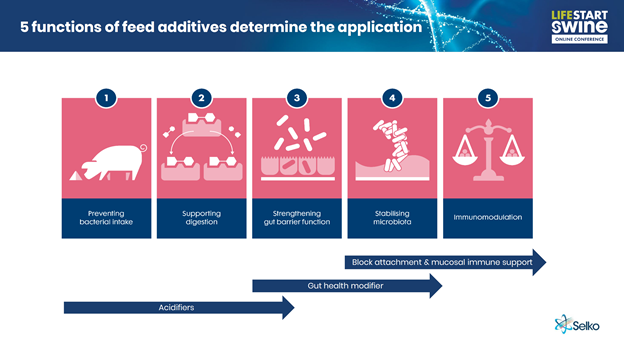
Looking specifically at gut health modifiers, they can improve microbiota stability and gut morphology. Trouw Nutrition tested their gut health modifier’s impact on piglets using two pre-weaning groups of piglets.
- Control group (navy bar) - received a commercial diet without the functional feed additive.
- Treatment group (green bar) – received the commercial diet with the functional feed additives.
The treatment group with the functional feed addictive had improved bacterial loads in the small intestines.
“More important, in the same study, we looked at the diversity of the microbiota in the smaller intestine,” he said. “In the control group, the bacteria load went up, but the diversity goes down, which means there's overgrowth of certain bacteria and a reduction or even exclusion of other bacterial species which causes a complete disruption of the microbiota. Whereas with the use of functional feed additives, that is not happening. You maintain the same bacterial loads; you keep the same number of species and ultimately the same microbiota diversity. So, the functional feed additives are able to stabilize the microbiota during the challenging weaning process.”
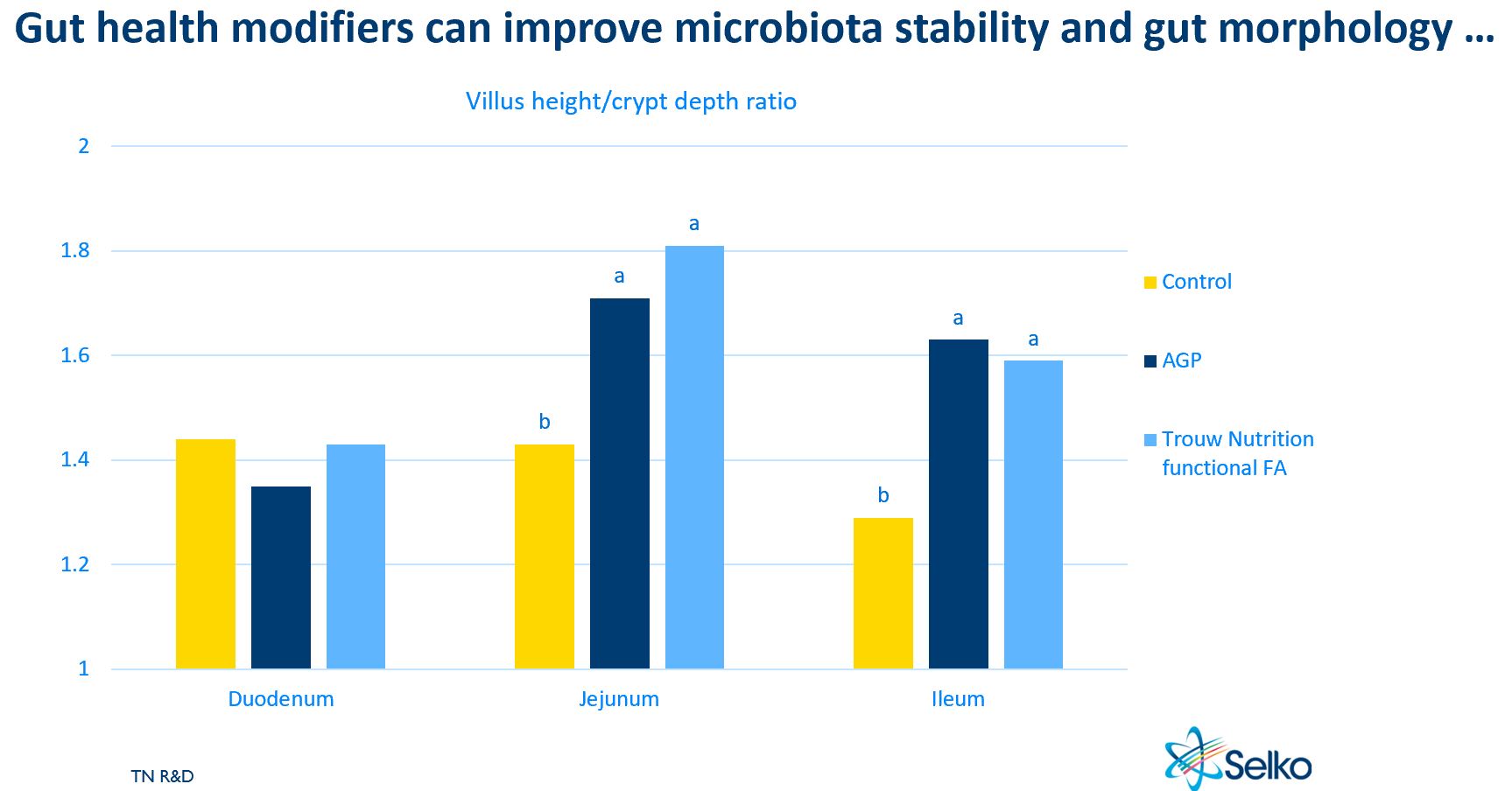
In a meta-analysis study using 14 trials in five countries across three continents, functional feed additives show significant improvement of approximately 6% compared to control groups and average daily gain (ADG) and a significant improvement of approximately 3% in feed efficiency compared to control groups.
“Under gut health challenged conditions, use of functional feed additives showed real on-farm results that will add to a producer’s bottom line,” he noted.
No gut health challenge?
When there’s no gut health issues on a farm, the goal of piglet feeding programmes remains the same - maximize early life performance and profitability. Even with no gut health challenges, a producer could still see production losses, for example, caused by growth retardation, heterogeneity and poor feed efficiency.
“We have developed an innovation package using different nutritional technologies to work with this scenario,” he explained. “In this meta-analysis, the benchmarks were set at 0%, and the bars show the relative difference of our nutritional technologies compared to these nine benchmarks. We achieve significant improvement in final weight and feed efficiency of approximately 5%. Our overall cost and feed cost per kg gain drops about 10%. Thus, we obtain more performance in early life at a lower cost, which means more total lifetime performance. We do this using multiple nutritional technologies including protein, specialty ingredients, energy, lactose and milk replacers.”
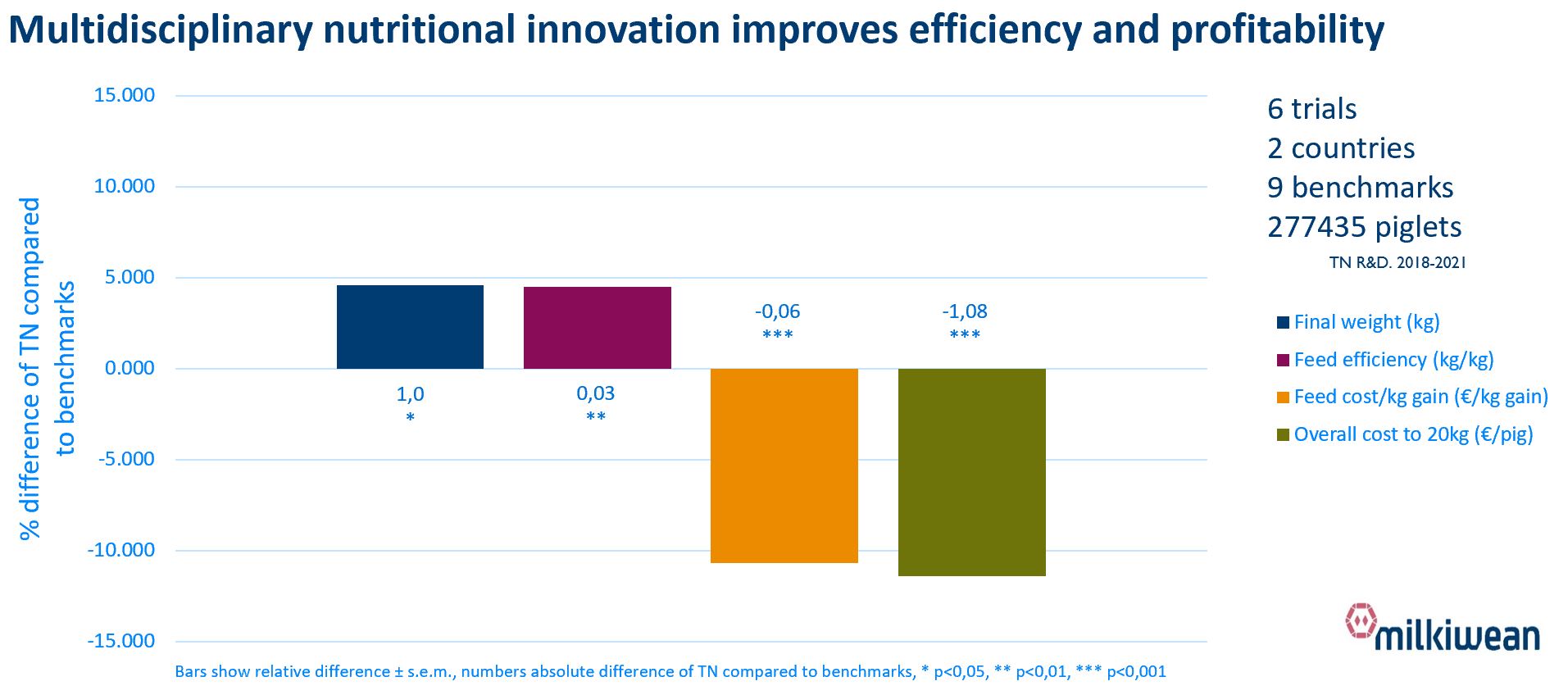
Conclusion
“Early life is important - what you do between conception and weaning can impact your total lifetime performance in many different ways,” he said. “If you want to optimize your pigs’ performance, it's essential to identify the underlying challenges and match them with a solution to optimize your production.”
To watch Ruben Decaluwe’s presentation or other seminar speakers on-demand, click one of the following links:







